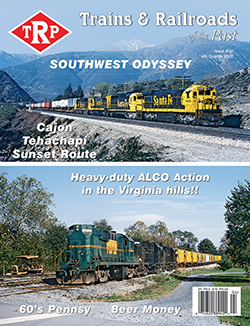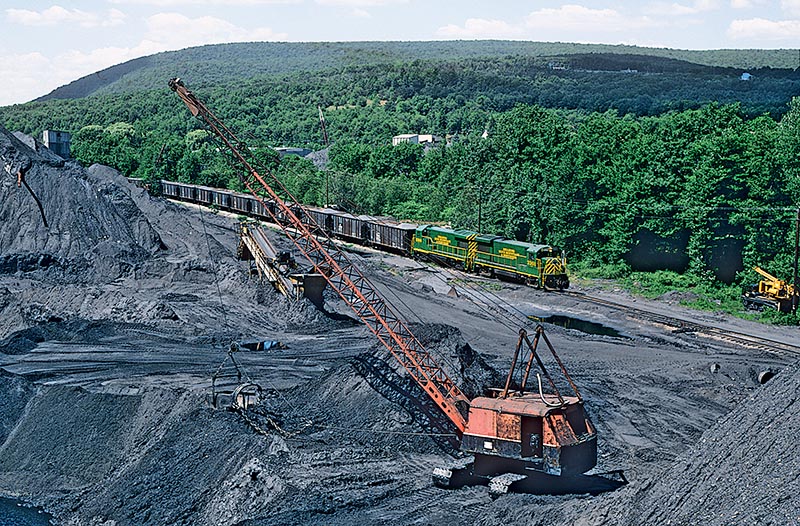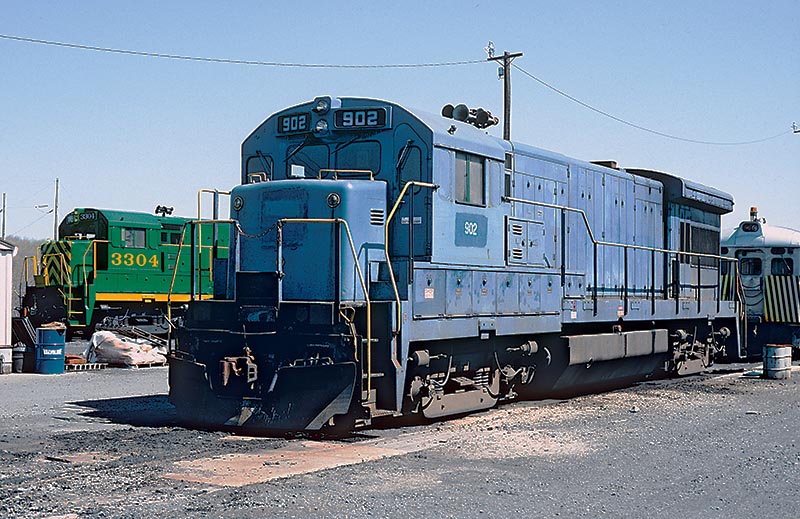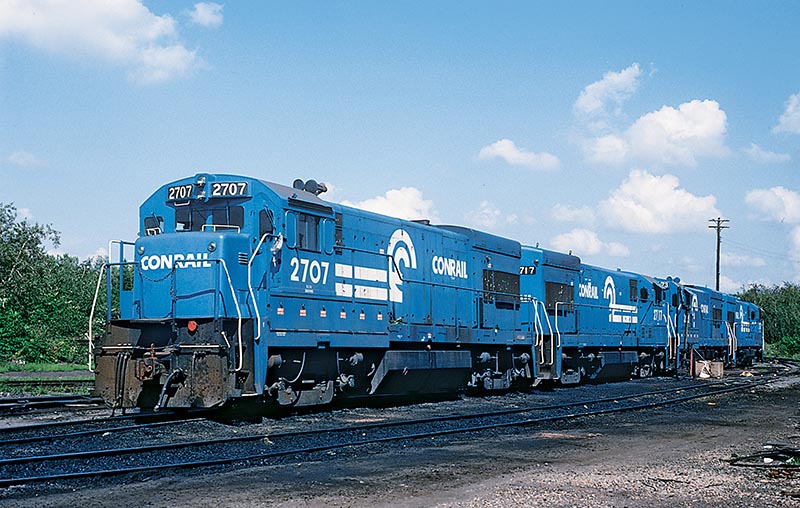 by Mike Bednar/photos as noted
by Mike Bednar/photos as noted
During my last 15 years working on the railroad, I was lucky enough to work in the area I always liked. In December 1990, Andy Muller’s Reading, Blue Mountain and Northern was formed to operate the former Conrail “Reading Cluster” (essentially, all of the Reading Railroad territory north of the city of Reading), encompassing the remnants of what was once the Anthracite Kingdom. This area was responsible for the rise of the anthracite roads. The railroads that became rich with anthracite were the Reading; Lehigh Valley; Central Railroad of New Jersey; Lehigh & New England; the Erie; Delaware, Lackawanna & Western; and the Delaware & Hudson. Anthracite coal was said to be akin to “Black Diamonds.”
By the early 1950s, the use of anthracite coal was waning. It was no longer popular for home heating and industry, as soft coal replaced anthracite in iron and steel making. The Knox Mine Disaster, which occurred near Pittston, Pa., in 1959, resulted in the end of deep mining in the Wyoming Valley of Pennsylvania. This is one of the factors in prompting the Erie, DL&W, and D&H to give up on anthracite.

ABOVE: In addition to coal trains, stone trains were run from Arlington Yard in Tamaqua. The first stone train to be sent out of Tamaqua is led by U33Bs 3301-3300 and is shown passing “Premium Fines” Coal Company at South Tamaqua on June 8,1991. —Photo by Rod Miller
One-by-one, the anthracite roads lost money and began to crumble. In 1961, the Lehigh & New England abandoned much of their line, with only a short portion left in the anthracite field around Tamaqua. The cement region and this small portion were taken by the Jersey Central.
The combination of low demand for anthracite and the loss of domestic iron ore trains to Bethlehem Steel via Mt. Carmel forced the Lehigh Valley Railroad to cut back service on the Mahanoy & Hazleton (M&H) branch. The crews were reduced from forty per day to only four daily. Only the Jeddo No. 7 Breaker at Harleigh, the Shaft Breaker in Hazleton and a few other small coal breakers still managed to remain in business. The Central Railroad of New Jersey lost much of their traffic and by 1972, the CNJ left the state of Pennsylvania altogether.

ABOVE: When I hired out on the R&N at West Cressona in March, only three of the U33Bs were working there. The 902 was known as “The Animal” and was a good, strong engine. It was well liked. It is shown here at West Cressona, along with the 3304 on April 11, 1991. The 902, 3301 and 3304 were active and the 3300 and 3303 would arrive shortly. The 902 later received number 3302. —Photo by Mike Bednar
The largest anthracite carrier, the Reading, still maintained jobs in the anthracite region out of West Cressona, St. Nicholas (Mahanoy City), and Tamaqua. When Conrail took over in 1976, they were not very interested in these various coal branches. The track was in poor shape and Conrail did nothing to improve it.
When the RBMN took over, the former Reading main line between Reading and Pottsville and the Little Schuylkill Branch from Port Clinton to Webster (south Tamaqua) were in relatively good condition, but the rest of the trackage in the region was in poor shape. Some branches were not fit to run trains at 10 m.p.h! Also, the coal loadings for export coal was very labor intensive because it had to be gathered from many breakers, making it very expensive…


